Raising chickens that lay jumbo eggs can be appealing for several reasons. Firstly, jumbo eggs can bring a higher price in the market, making them more profitable if you’re selling eggs. Also, for families raising chickens for their food, jumbo eggs can provide more bang for their buck over small eggs.
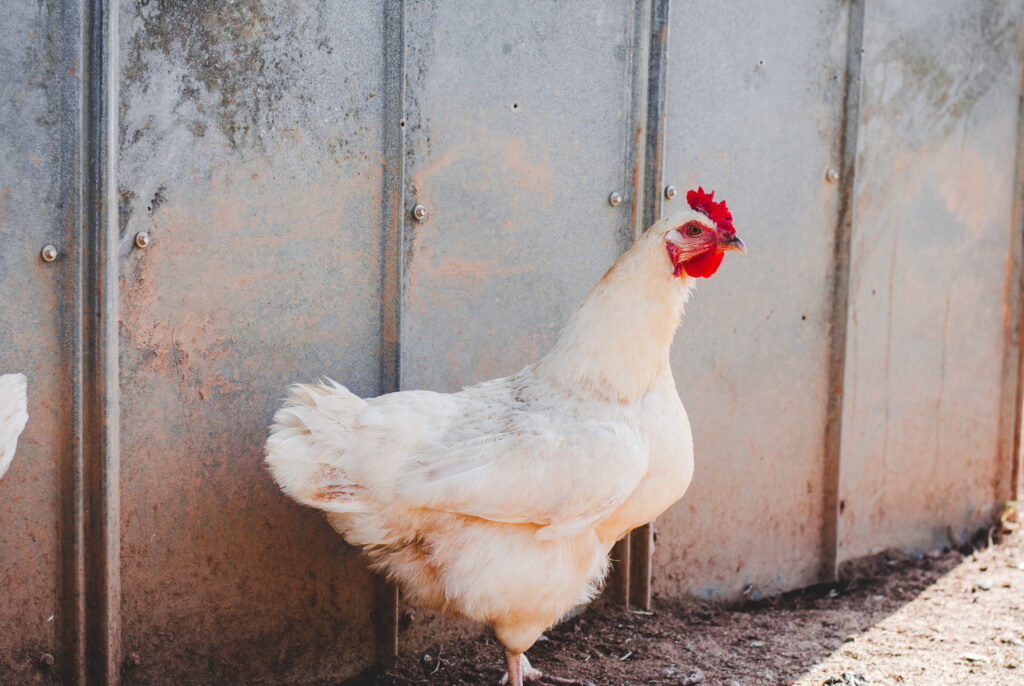
Also, if you’re interested in breeding chickens, having birds that lay jumbo eggs could be a good choice for increasing the value of your breeding stock.
I personally enjoy baking with jumbo eggs. They add a richness you can’t get from the eggs found on store shelves.
The top breeds for chickens that lay jumbo eggs are: White Leghorn, Orpingtons, Black Australorp, Sussex, New Hampshire Red, Rhode Island Red, Barred Rock, Isa Brown, White Plymouth Rock, Red Star, and Easter Eggers.
These breeds are great for backyard flocks and will provide you with a steady supply of beautiful jumbo eggs. Let’s talk about these breeds.
White Leghorn
When it comes to chickens that lay jumbo eggs, the White Leghorn stands out as a top contender. Known for being excellent egg layers, White Leghorns are bred with a specific purpose in mind: to produce copious amounts of high-quality eggs. These birds are efficient and consistent in their egg production, making them a popular choice for commercial egg producers and small farms alike.
One characteristic of the White Leghorn is its ability to lay large, white eggs. Their laying capabilities, combined with their hardiness, make White Leghorns great for anyone wanting a reliable source of jumbo eggs.
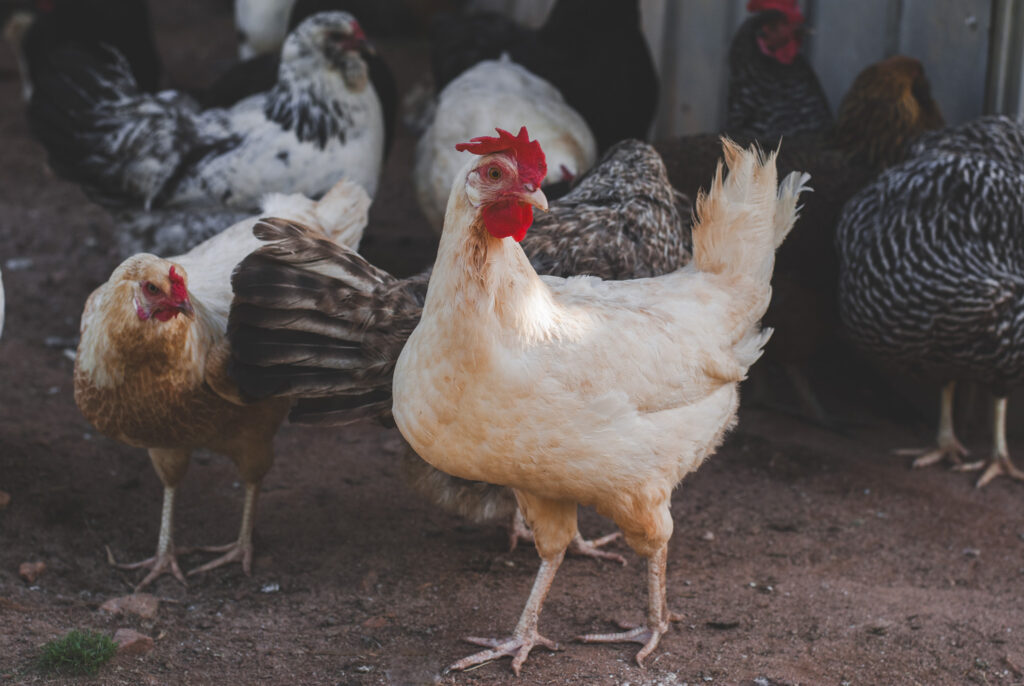
Buff Orpington
One of the best backyard chickens that lay jumbo eggs is the Buff Orpington. Known for their docile nature, Buff Orpingtons are beloved for their friendly personalities, making them excellent for family flocks. Beyond their personality, Orpingtons are prized for their ability to produce large, light-brown eggs consistently. This breed’s reputation as a good egg layer, coupled with their gentle disposition, makes them a popular choice.
Buff Orpingtons are known as good egg layers, typically laying around 200 to 280 eggs per year. While individual hens’ egg-laying rates can vary based on many factors, Buff Orpingtons generally maintain consistent egg production. This makes them a great choice for anyone looking to enjoy a regular supply of homegrown eggs.
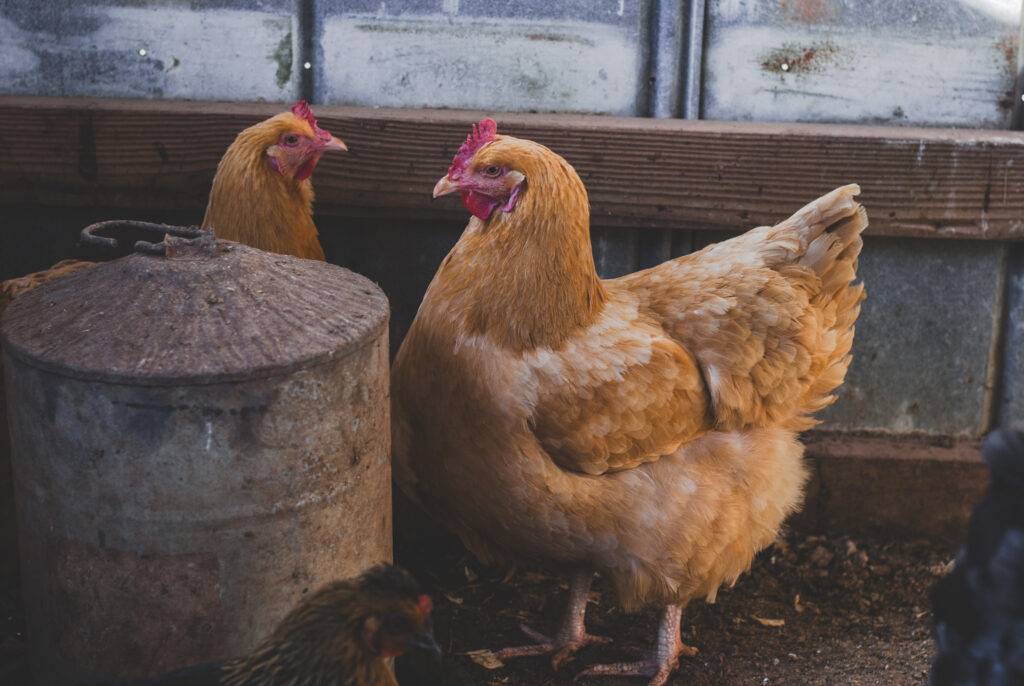
Black Australorp
The Black Australorp is a top contender for chickens that lay large eggs. These birds are known for being prolific egg layers, consistently laying a substantial number of eggs throughout the year. Even in colder climates, where some breeds may decrease their egg production, Black Australorps are reliable layers, making them a great choice for chicken keepers in regions with chilly winters. On average, a Black Australorp hen lays between 250 to 300 eggs per year, making them a dependable source of fresh eggs.
One feature of the Black Australorp’s eggs is their rich, brown color and larger size compared to a typical egg found in grocery stores. When cracked open, their yolks are often deeper in color and have a higher nutrient content than their commercial counterparts. Additionally, Black Australorp eggs tend to be larger.
I own several Black Australorp hens in my flock and love their sweet demeanor and reliable laying.
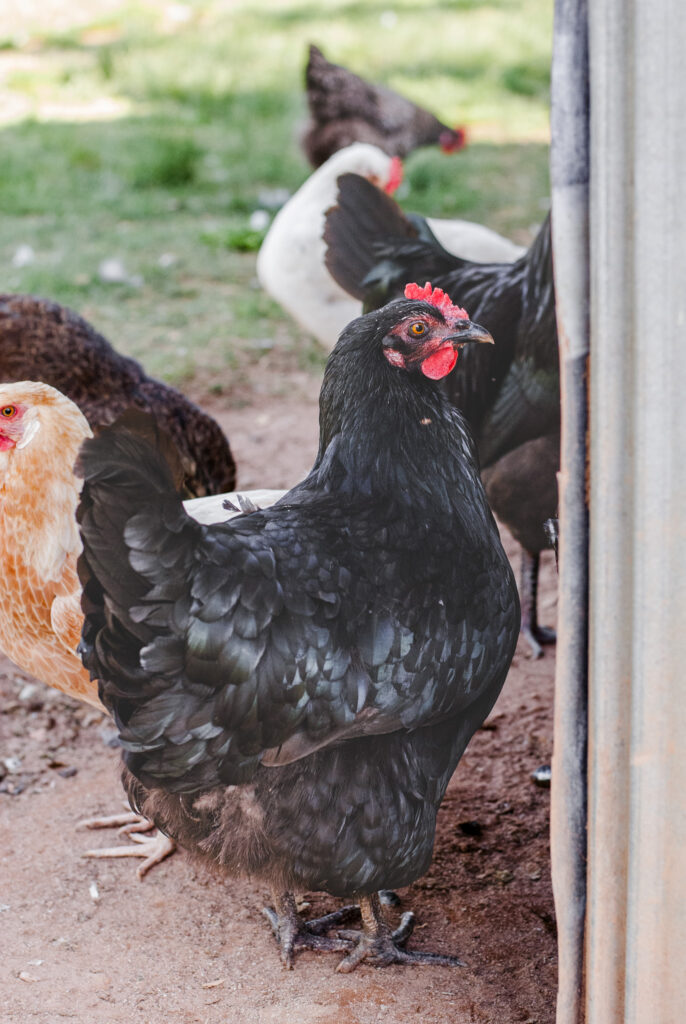
Sussex
The Sussex Chicken can’t be overlooked when we’re looking at egg size. These birds are not only fantastic egg producers but also beautiful chickens to have around the coop. One of the things that make Sussex stand out is the color of their eggs. They lay eggs that range from light brown to cream-colored, adding a touch of variety to your egg basket. Plus, these eggs are usually larger than your average grocery store eggs, giving you more bang for your buck at breakfast time.
Speaking of eggs, Sussex Chickens are not only beautiful birds, but they’re also consistent layers. On average, they can lay around 250 to 280 eggs per year, ensuring you’ve got plenty of fresh eggs to go around. And what’s cool about Sussex is that they’re pretty versatile when it comes to their environment. They enjoy free-ranging if you’ve got the space, but they’re also content to hang out in a coop if that’s what you’ve got. Plus, they’re adaptable to different climates, so whether you’re dealing with scorching summers or chilly winters, the Sussex can handle it like a champ.
New Hampshire Red
The New Hampshire Red is great for producing jumbo eggs and as a dual-purpose breed. Not only are they great egg layers, but they’re also known as excellent meat birds. If you’re looking for chickens that thrive in a free-range environment, the New Hampshire Red fits the bill perfectly.
In terms of egg production, these birds lay around 200 to 250 large brown eggs per year, making them a reliable source of fresh eggs. Plus, the size of their eggs is impressive compared to your typical store-bought eggs.
However, New Hampshire Reds can have a bit of a feisty side to their temperament. While they’re generally docile, they can be aggressive towards other birds, especially if they feel their territory is being threatened. Also, their large single combs can be susceptible to frostbite in colder climates, so they need to have shelter.
Despite these quirks, New Hampshire Reds are known for their hardiness, adaptability, and overall productivity, making them a popular choice for both egg and meat production. Whether you’re raising them for their eggs, meat, or just their charming personalities, New Hampshire Reds are sure to make a welcome addition to any flock.
Rhode Island Red
When it comes to chickens that lay jumbo eggs, you can’t overlook the classic Rhode Island Red. These birds are not only prolific layers but also pretty hardy and good foragers. If you’re looking for chickens that can fend for themselves, Rhode Island Reds fit the bill.
Now, how do they compare to New Hampshire Reds? Well, both breeds are known for their egg-laying prowess and dual-purpose qualities, but they do have their differences.
Rhode Island Red chickens tend to have a bit more of a fiery personality compared to the laid-back demeanor of New Hampshire Reds. They’re nice to people but can be a bit unfriendly towards other birds in the backyard flock, so keep an eye on them during chicken squabbles.
As for their history, Rhode Island Reds have quite the story. They’re one of the oldest breeds of chicken in the United States originating in—you guessed it—Rhode Island back in the mid-1800s. These birds were bred for their hardiness, egg production, and meat, making them a favorite on farms across the country.
Rhode Island Reds lay large, light brown eggs that are bigger than your average grocery store egg. Rhode Island Reds are also a great investment for any chicken owners looking for a reliable source of farm-fresh eggs.
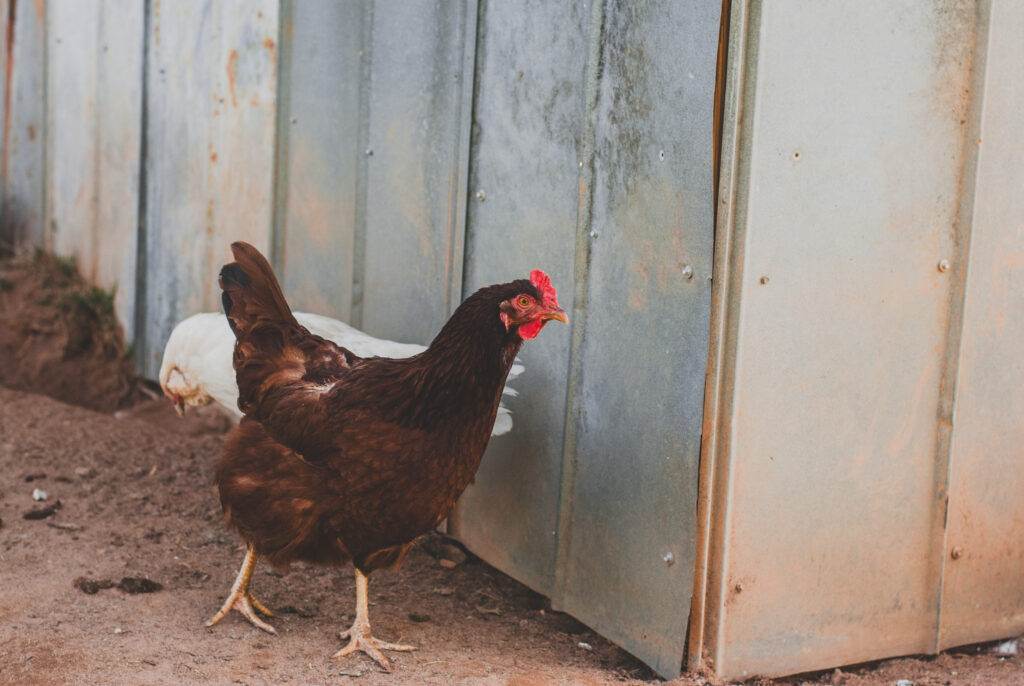
Barred Rock
The Barred Rock is a top pick for chickens that lay jumbo eggs. These birds are known for their resilience and their dual-purpose qualities.
In terms of egg production, Barred Rocks are good layers and hardy birds. They typically lay around 200 to 280 large brown eggs per year. These eggs are not only plentiful but also larger compared to your average store-bought egg.
When it comes to temperament, Barred Rocks are known for being friendly and easygoing, making them a good fit for families with backyard flocks. They’re sociable birds that get along well with both humans and other members of the flock.
As for climate preferences, Barred Rocks can live in a variety of environments and tolerate cold weather well. However, they tend to do best in moderate climates where there is a balance of sunshine and shade. With their hardy nature and friendly disposition, Barred Rocks are a fantastic addition to any flock.
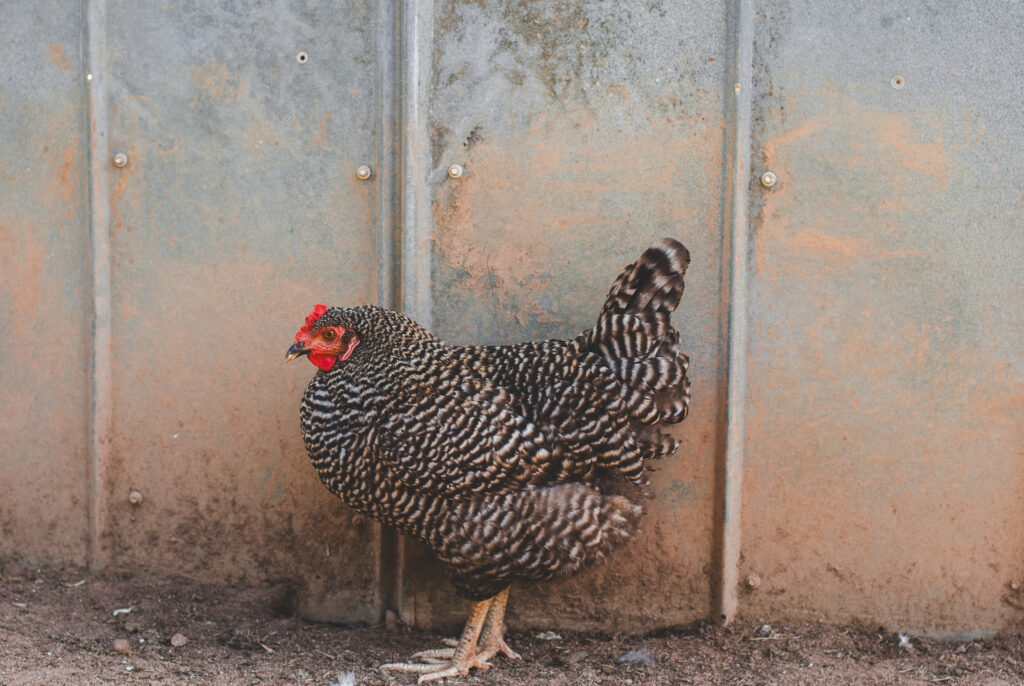
Isa Brown
When it comes to egg-laying powerhouses, the Isa Brown is a superstar in the world of hybrid chickens. These birds have exceptional egg-laying capabilities, making them a popular choice for backyard flocks.
On average, an Isa Brown hen lays an impressive 300 to 350 large brown eggs per year. That’s a hefty supply of eggs that’ll keep your kitchen well-stocked with delicious, farm-fresh goodness. Isa Browns produce eggs that are not only plentiful but also larger in size compared to your average store-bought egg, making them a favorite among egg lovers.
When it comes to temperament, Isa Browns are known for being friendly, docile, and easy to handle. They get along well with both humans and other members of the flock, Plus, their calm demeanor makes them an excellent choice for families with children or those new to chicken keeping.
White Plymouth Rock
The White Plymouth Rock is a great dual-purpose heritage breed that lays an abundance of jumbo eggs. On average, a White Plymouth Rock hen lays approximately 200 to 280 large brown eggs per year. These eggs are not only plentiful but also larger in size compared to your average store-bought egg.
Temperament-wise, White Plymouth Rocks are known for their calm and friendly demeanor. They’re sociable birds that get along well with both humans and other members of the flock, making them an excellent choice for backyard settings.
As a heritage breed, the White Plymouth Rock has been a staple in American History since the mid-1800s. These chickens were bred for their robustness and versatility for both egg production and meat. They remain to be a great addition to your backyard flock whether you’re looking for an egg layer or meat bird.
Red Star
The Red Star, also known as the Golden Comet Chicken, stands out as one of the best egg layers in the flock. These hybrid chickens are known for laying an abundance of large brown eggs. They can lay an average of 300 to 330 eggs per year. They’re also a sex-link breed so it’s easy to spot the hens and roosters as chicks.
In terms of temperament, Red Stars are known for being friendly and not as flighty as other super layers like the Leghorn. Red Stars are a great option if you’re looking for a well-mannered chicken that consistently lays a lot of jumbo eggs.
Easter Egger
The Easter Egger has steadily grown in popularity over the years. They’re actually a hybrid of several different breeds that carry a blue egg trait, but they don’t have any specific physical characteristics. They’ll add a colorful twist to your egg basket with their unique egg hues.
On average, an Easter Egger hen lays around 200 to 250 large eggs per year. What sets their eggs apart is their variety of colors, ranging from shades of blue and green to pink and even light brown. Compared to a grocery store egg, Easter Egger eggs add a vibrant splash of color and diversity.
In terms of temperament, Easter Eggers are known for being friendly, curious, and easygoing birds. They’re great for backyard flocks and families with children.
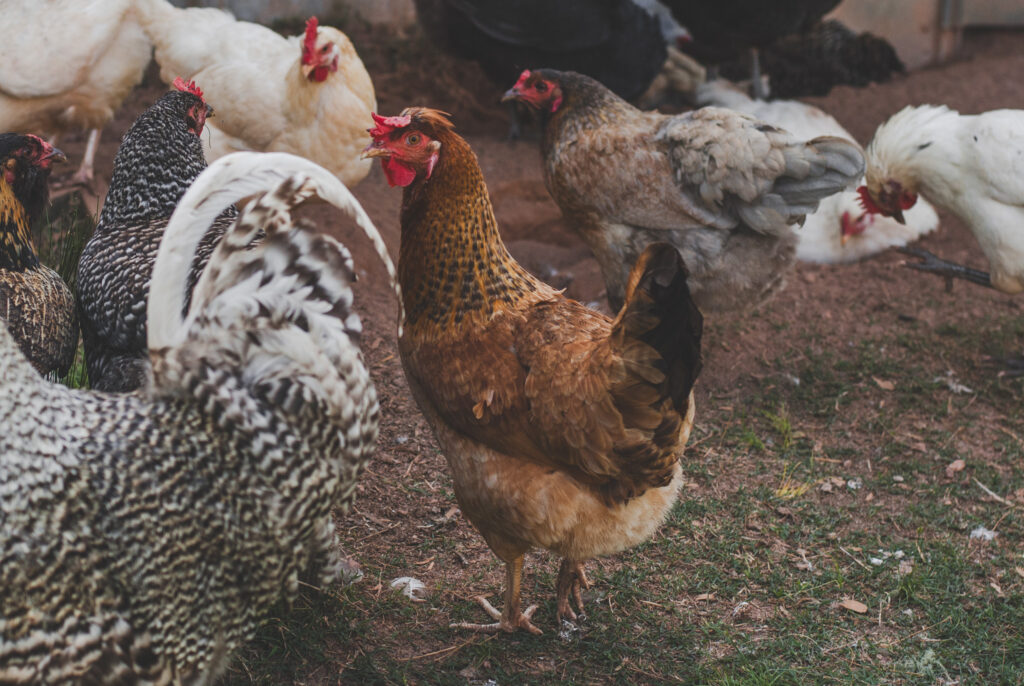
Bielefelder
The Bielefelder is a German chicken breed that lays some of the biggest brown eggs of any chicken breeds on the list. They are a large chicken maxing out around 10-12 pounds. Bielefelder’s are also friendly and a great addition to any backyard flock.
I have a large Bielefelder rooster that was a “surprise chick” from a hatchery order. He is a gentle giant and one of my favorites of all the boys in my barnyard.
Another great thing about the Bielefelder is they breed true. They mate true and are slow growing so they have all the great traits of a heritage breed. They’re also an auto-sexing breed which means you’ll easily be able to tell which chicks are female and which ones are males. Female are a dark brown color with a back mark across their eyes.
You’ll love the personality and large brown eggs this breed brings to your flock!
FAQs
How big are jumbo eggs compared to regular eggs?
Jumbo eggs are larger in size compared to regular eggs and can weigh around 2.5 ounces or more, while regular eggs typically weigh around 2 ounces.
How often do chickens that lay jumbo eggs lay?
Chickens that lay jumbo eggs can lay anywhere from 200 to 300 eggs per year, depending on factors like breed, age, and environmental conditions.
Are jumbo eggs safe to eat?
Yes, jumbo eggs are safe to eat just like regular-sized eggs. They provide the same nutritional benefits and can be used in cooking and baking like any other egg.
Do jumbo eggs have thicker shells?
Jumbo eggs can have slightly thicker shells compared to regular eggs, but the difference may not be significant. The thickness of the eggshell can vary depending on factors like breed and diet.
How do I encourage my chickens to lay jumbo eggs?
To encourage your chickens to lay jumbo eggs, provide them with a balanced diet rich in calcium and protein, ensure they have access to clean water and adequate space and minimize stress in the flock.
Final Thoughts
That’s it for the roundup of chicken breeds that lay jumbo eggs! From the friendly Red Star, and the colorful Easter Egger to the classic White Plymouth Rock, there’s a feathered friend for every coop. Don’t forget about the hardy Isa Brown, the striking Barred Rock, and the resilient Rhode Island Reds and New Hampshire Reds. And let’s not overlook the beautiful Sussex, the adaptable Black Australorp, the cuddly Buff Orpington, and the efficient Leghorn. Whether you’re a poultry pro or just starting our keeping chickens, these chicken breeds are sure to add a whole lot of delicious eggs to your life.
Down load my FREE eBook on how to care for farm-fresh Eggs!
If you enjoyed this chicken article, please share it! Thanks for visiting my farm.
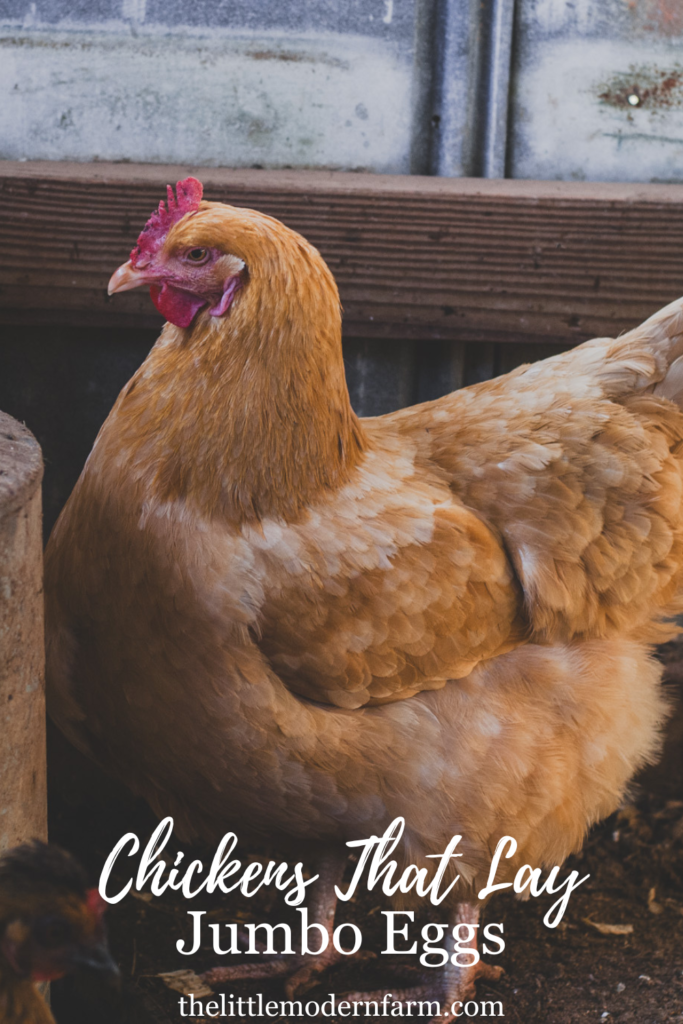
[…] What Chickens Lay Jumbo Eggs? […]